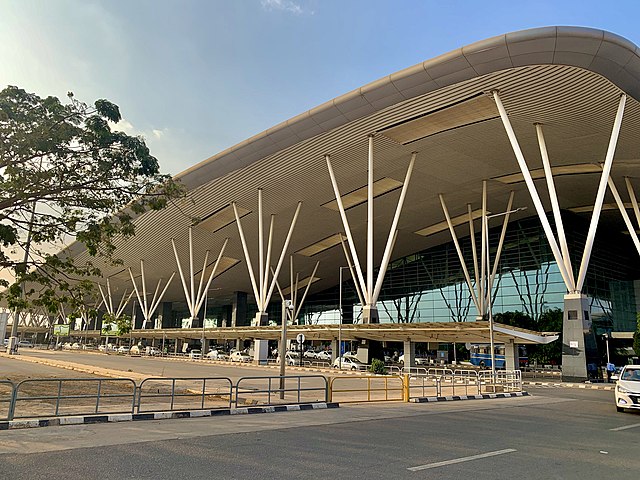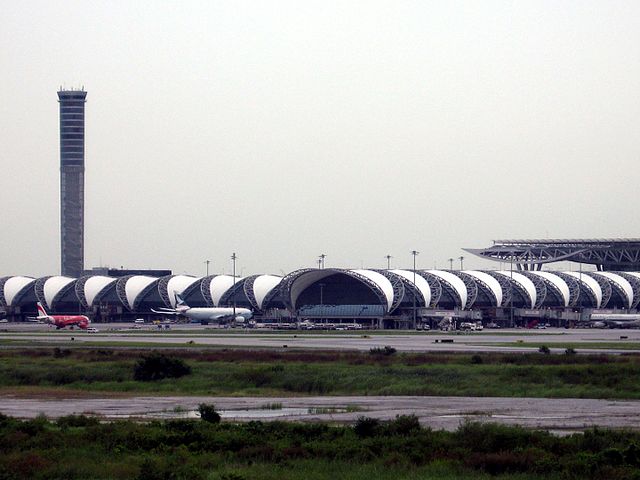The airport apron, apron, flight line, or ramp is the area of an airport where aircraft are parked, unloaded or loaded, refueled, boarded, or maintained. Although the use of the apron is covered by regulations, such as lighting on vehicles, it is typically more accessible to users than the runway or taxiway. However, the apron is not usually open to the general public, and a permit may be required to gain access. An apron's designated areas for aircraft parking are called aircraft stands.
The apron area of Vienna International Airport
Airbus A380-800 operated by Qatar Airways on apron outside Heathrow Terminal 4 with jet bridges and a wide range of ground handling equipment around such as aircraft container, pallet loader, ULD, jet air starter, belt loader, pushback tug, catering vehicles, and dollies.
The apron at Anguilla Wallblake Airport clogged with business jets
An airport is an aerodrome with extended facilities, mostly for commercial air transport. Airports usually consist of a landing area, which comprises an aerially accessible open space including at least one operationally active surface such as a runway for a plane to take off and to land or a helipad, and often includes adjacent utility buildings such as control towers, hangars and terminals, to maintain and monitor aircraft. Larger airports may have airport aprons, taxiway bridges, air traffic control centres, passenger facilities such as restaurants and lounges, and emergency services. In some countries, the US in particular, airports also typically have one or more fixed-base operators, serving general aviation.
Bengaluru's Kempegowda International Airport
Bangkok Suvarnabhumi Airport
Terminal 3 at Dubai International Airport (DXB)
Commercial jets wait for the "7am hold" to pass before departing from John Wayne Airport in Orange County (Santa Ana), California, on February 14, 2015







